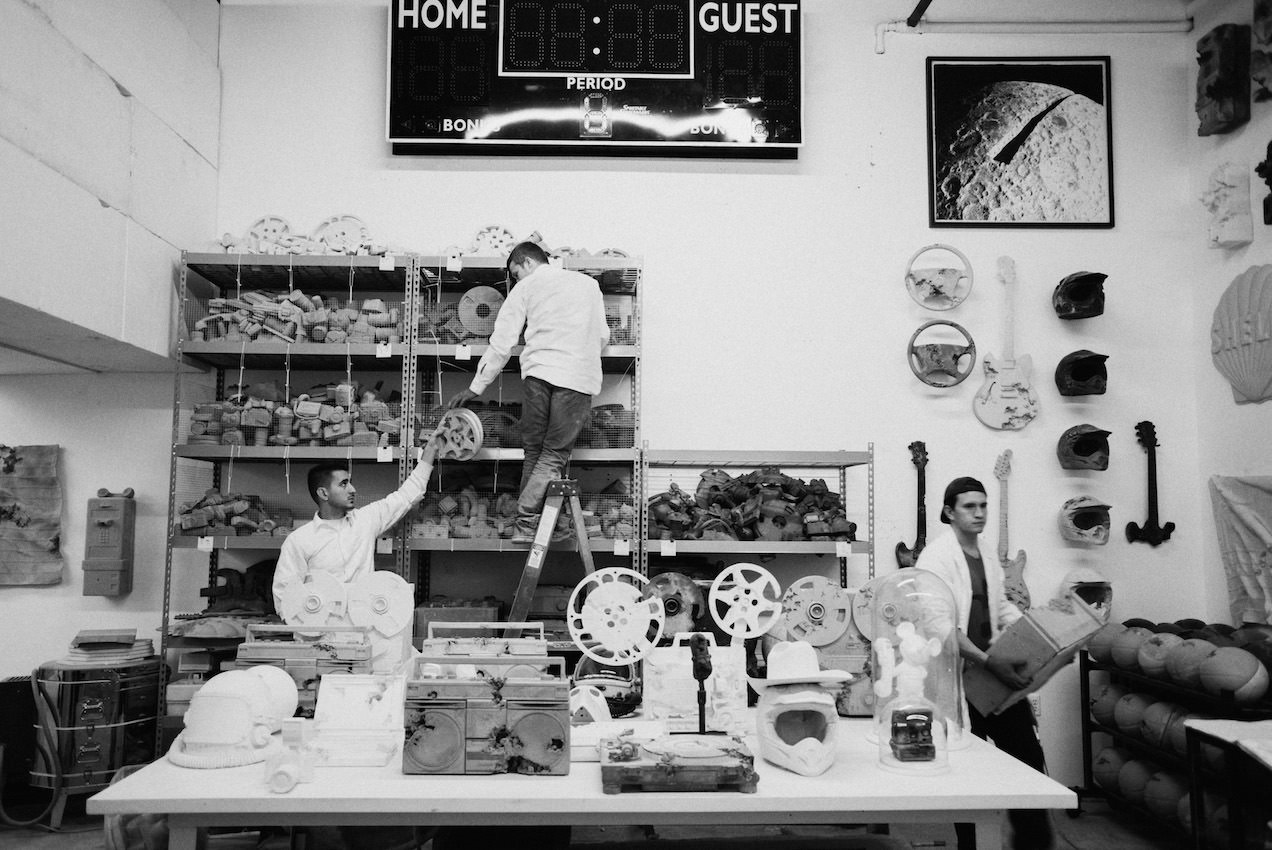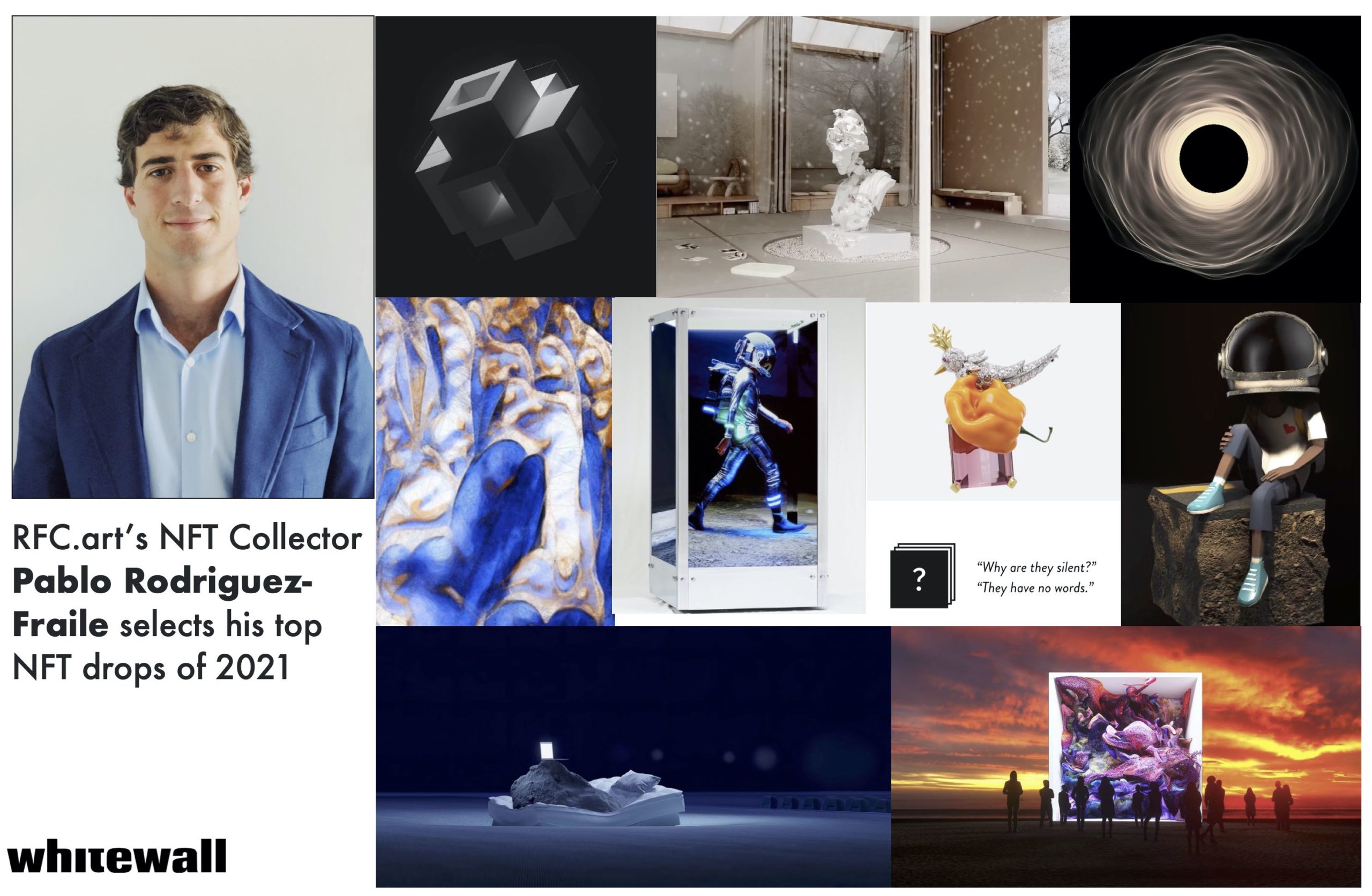“Reach Ruin,” is the title of Daniel Arsham’s new exhibition, which opened at the Fabric Workshop in Philadelphia on Friday, December 13. The title is an anagram of “hurricane,” referencing the artist’s childhood recollections of the devastation wreaked by Hurricane Andrew on his hometown of Miami, Florida in 1992.
The evening began on the 7th floor of the space with “Study for Occupant,” a live dance performance collaboration with Jonah Bokaer featuring four women dressed as astronauts enacting a variety of decelerated movements with a camera cast in plaster. Set over circular chalk drawings and under neon blue light, the performance captured the mysterious twilight and slow revolutions of the moon, a presence that has special significance for the artist, “When I experienced the storm as a child,” recalls Arsham, “the power was out for months, and the moon was this kind of sentinel in the night, and I’ve combined all of those experiences into those drawings.”
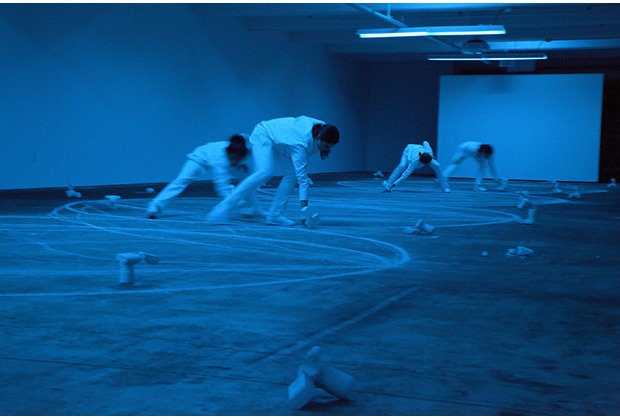 7th Floor
7th Floor
Post performance, guests were led to the 1st floor gallery, where Arsham continued his investigations into moonlight, namely through a series of Mylar-on-gouache paintings that depict the moon dissected into linear sections, bordered by handmade frames cast from sand and broken glass. The second room on the 1st floor showcases two sculptures that exemplify Arsham’s famous interest in the way nature interacts with architecture. “Wrapped Figure (2012),” displays a man wrapped inside a wall, while “Hollow Figure (2012),” is a figure draped in a long white sheet that appears to have suddenly engulfed him. In former sculpture, it is unclear whether the figure is fighting a losing battle with a wall threatening to swallow him, or whether he is seeking protection in it from an external force. Similarly, the latter appears solid, yet a look around reveals it to be hollow, capturing the wind in a frozen moment. Both works play with our perception, keeping with the “reconfiguration of expectation” that underlies the exhibition. “When we think about nature’s impact in architecture, earthquakes, hurricanes, tornadoes, all of that, it’s often done in a very fast and violent way. All these pieces do that in a very slow, almost non-invasive way. It’s a very quiet, slow destruction.”
The next phase of the exhibition continues on the 8th floor where the sculptures address the artist’s memory of the hurricane, specifically hiding in his closet throughout the storm, only to be confronted the next day with scenes of drywall disintegrated into sand, aluminum studs bent beyond recognition, and objects pulverized, covered in debris, paper, dust, and broken glass. “After the storm there was glass everywhere. I went back to those memories and tried to find materials that I could repurpose. For me, it was about taking something that is broken, useless, and remaking it in a way that has a purpose about it, or can go back into a form that has intention.” The result is nine Styrofoam columns covered in shattered glass. The columns, which look strikingly similar to the actual columns in the Fabric Workshop, are meant to create an environment of erosion and destruction.
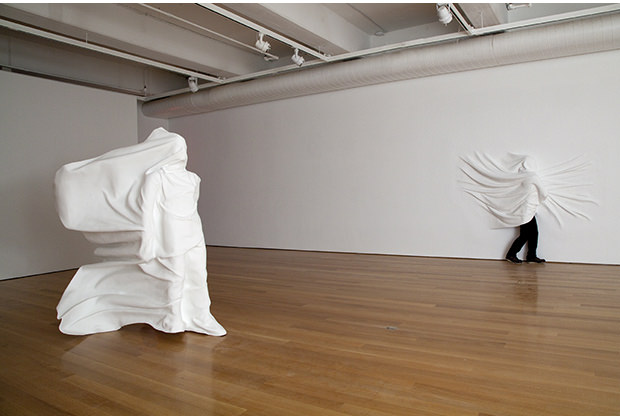
Further along on the same floor the narrative continues with “Seated Glass Figure (2012),” and “Thinking Glass Figure (2012),” two sculptures cast from the artist’s body and covered in dark green and icy white shattered glass. In both sculptures, the figure sits in a childlike pose: in one, he is curled up with his knees bent and head hanging dejectedly, in the other, he is sits upright with his legs dangling, hands spread firmly against the surface. In some ways, both display a victory over the storm, as he sits recast in the same materials that once nearly destroyed him.
The exhibition ends with “Storm (2012),” a sound piece that Arsham worked on for 10 years, requiring the help of an MIT engineer to perfect. “Storm” is a coral reef shaped cavern laced with white crystals that comes to life every seven minutes with flashes of lightning interspersed with a layered rendition of Mozart’s Requiem. As the music swells, wind blows furiously through the hollowed out structure, abating and strengthening along with the chorus, recreating the many modulations of the storm’s almighty arch. “I took sixteen different recordings of it and layered them over each other. The dissonance creates this very bizarre, almost otherworldly quality. It’s a collapsed version of the storm that builds over a period and then just dies off.”
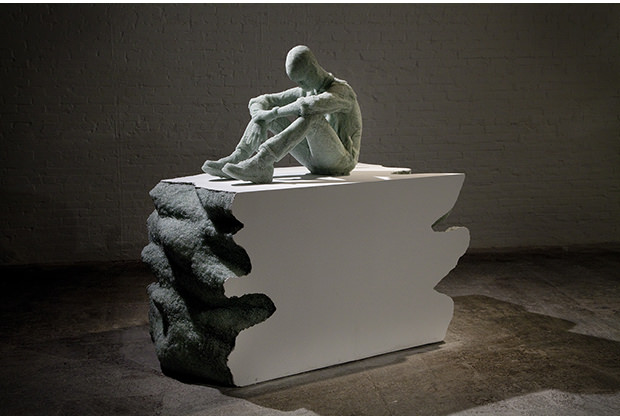 In Collaboration with Jonah Boaker
In Collaboration with Jonah BoakerArsham’s exhibition plays with the experience of navigating the artificial and natural world by slowing down or freeze-framing uncontrollable elements, and making solid structures of what was once shattered, illuminating the recreation that lies within even the most devastating of destruction.








